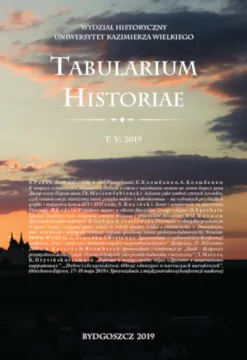Jedzenie jako symbol czterech żywiołów, czyli reminiscencje starożytnej teorii związku makro- i mikrokosmosu – na wybranych przykładach grafiki i malarstwa końca XVI i XVII wieku
DOI:
https://doi.org/10.34767/TH.2019.05.03Abstrakt
In early-modern times, the structure of the world – which dates back to the roots of ancient philosophy – was basically defined using three concepts: matter, time and space. The world was made up of four elements: water, earth, fire and air. In his treatise entitled Iconology (or a collection of emblematical figures), first published in Rome in 1593, Cesare Ripa created an artistic canon
of early-modern allegories. Even before Ripa’s publication, there was a tendency in the Netherlands to combine symbols of all the elements with the concept of food. In a series of four paintings by Joachim Beuckelaer, stalls with merchants have deliberately been placed in the foreground, and scenes from the gospels – depicting spiritual values – only appear in the background. The symbolism of In addition to the individual personifications of the elements, often identified with figures of ancient deities, the topic of the elements, in the art of the late 16th and 17th centuries, appears in the guise of a genre scene, a landscape with staffage, or a still life. Most frequently, food products, or activities related to obtaining food or preparing dishes, become symbols of the elements. However, the first impression that the high-flown theme of the four elements, which – as was still believed in the early days of the early-modern era – resided in the sublunar sphere, was reduced to trivial images of food, turns out to be deceptive. It should be remembered that, in accordance with the principle in force since ancient times, which emphasizes the inherent relationship of the macrocosm and microcosm, man is also made of the same elements as the matter from which the world is built. This is the principle that lay at the heart of Aristotle’s four-element theory (Latin qualitates), as well as the medical theories of Hippocrates, and later those of Galen, based on the relationship between the elements and the temperaments and their impact on the treatment process, in which the right choice of food played an important role. Ancient medical theories remained in force well into the 16th and 17th centuries. As can be seen, in the same period, depictions showing the elements in the form of food products, on which man feeds, were also popular. In reality, the above-mentioned paintings and prints also visualized, in a disguised manner, the idea of the ancient relationship between the macrocosm and the microcosm. the elements, combined with food, also appears in two paintings by Sebastian Stosskopff, and in a series of engravings by Jacques de Gheyn II. On individual plates (depicting air, earth, water), we see representatives of the three ages of man showing animals that have been hunted or caught. The woman, personifying fire, was portrayed as a cook holding a spit skewered with a bird and a hare, while a fish lies on the table next to her. In the case of the last plate, its meaning is more complex, and it is not devoid of erotic content since it refers to the metaphor of fire as a symbol of physical desire. Also of interest is a series of copperplate engravings depicting the Four Elements by Jeremias Falck made for the Parisian publisher Jean I Leblond. As we can see, the comments added to the series of engravings depicting the elements were often subordinated to the overriding idea – that of food. Falck’s Parisian series was used as a model by Johann Hoffmann. In the background of each plate, made for the publisher in Nuremberg, are scenes illustrating the acquisition of food. Whereas the series of landscapes engraved by Jan van de Velde II in 1622 shows a different way of presenting the elements with the use of various products.

